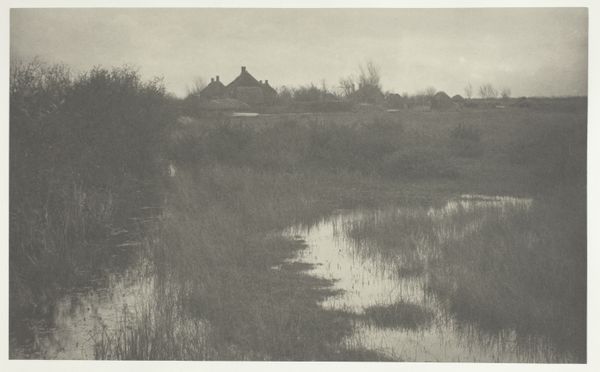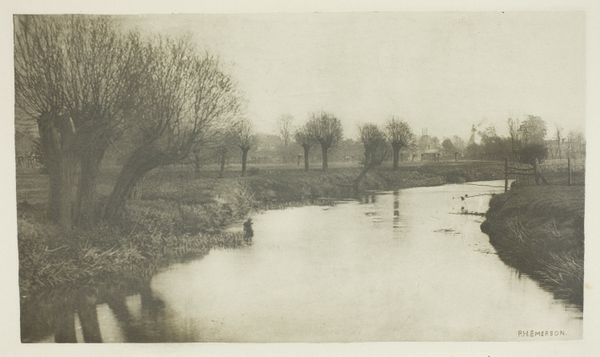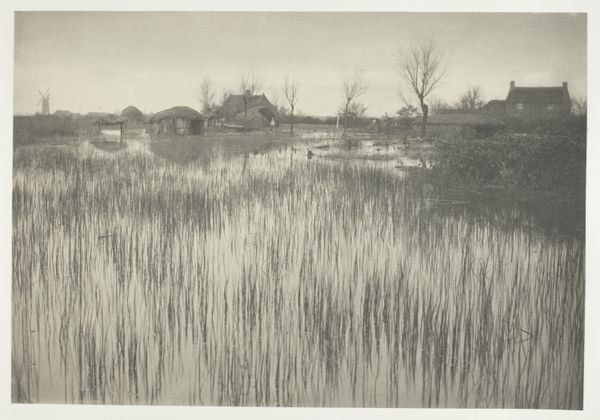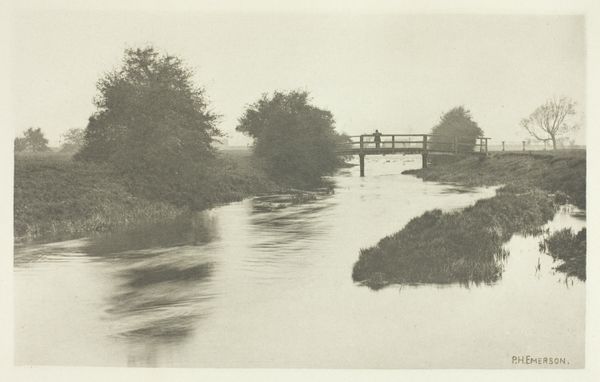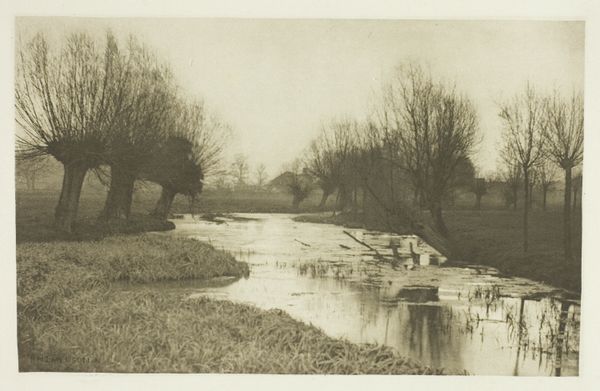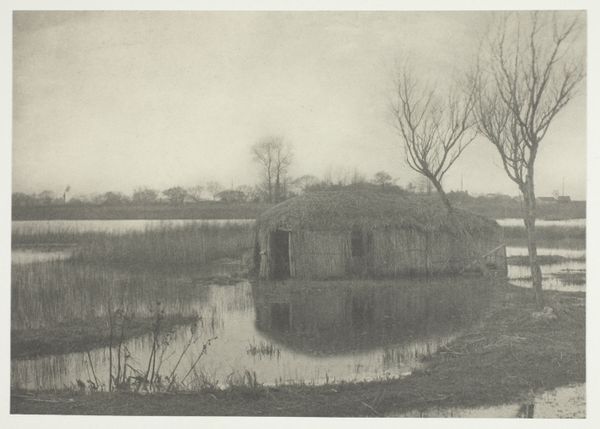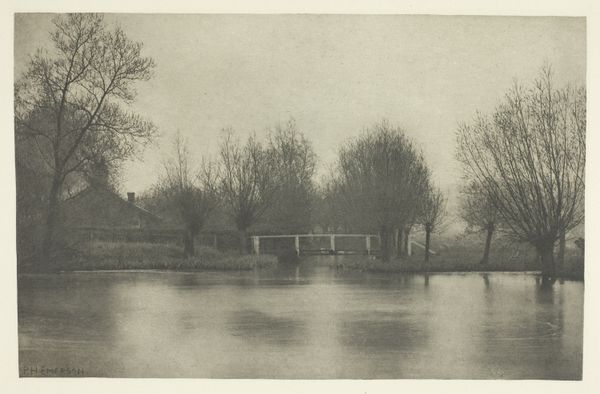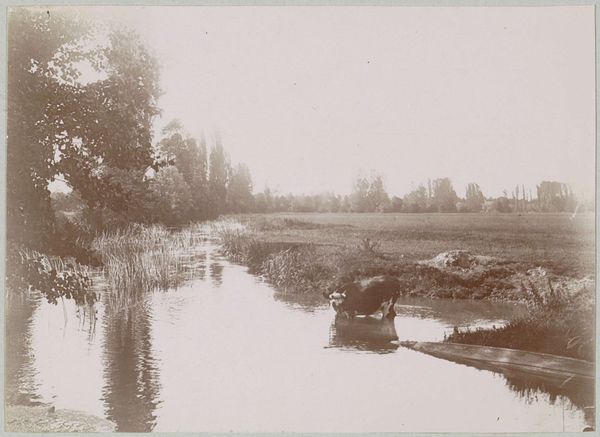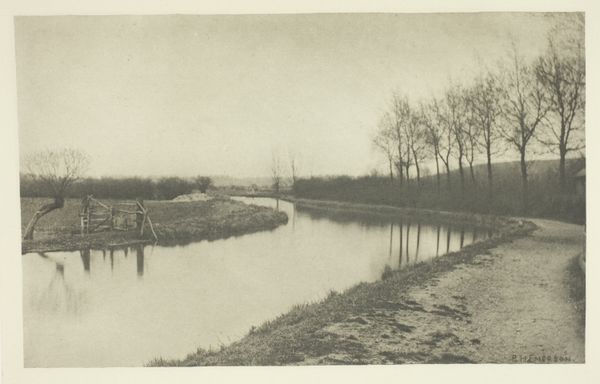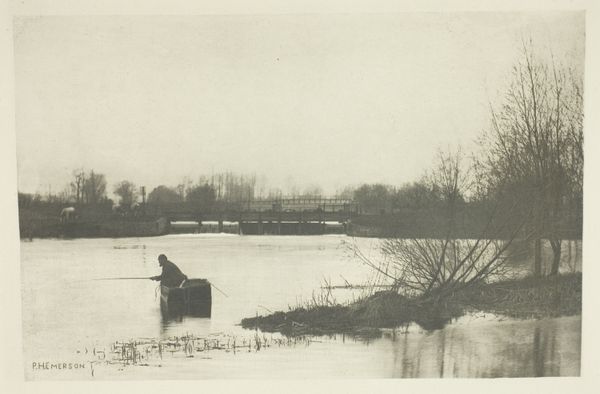
print, photography, gelatin-silver-print
#
pictorialism
# print
#
impressionism
#
landscape
#
nature
#
photography
#
gelatin-silver-print
Dimensions: 17.9 × 26.6 cm (image/paper); 28.6 × 40.8 cm (album page)
Copyright: Public Domain
Curator: Looking at this work, "An Autumn Morning" by Peter Henry Emerson, a gelatin-silver print from 1886 held here at the Art Institute, I'm immediately struck by its stillness. What catches your eye? Editor: Well, "stillness" is a kind word for it. It feels like a premonition of boredom, if I’m honest. Sort of bleak. The world rendered in shades of tedious grey. Curator: I see your point, perhaps it's a matter of perspective. Emerson, you see, was a champion of Pictorialism, which fought to have photography recognized as fine art, just like painting. He manipulated the image to give it a softer, more painterly quality, more about emotional truth than sharp detail. Editor: Ah, emotional truth. It just reads as muddy reality to me! The framing is odd, too. Is that supposed to be a path of sorts on the right there? And are those farm buildings in the background? Curator: Yes, a marshy landscape with buildings barely visible in the distance. But think about the politics of representation at the time. Emerson was consciously choosing scenes of rural labor and landscape, celebrating a rapidly vanishing way of life. It's a counterpoint to the industrialization boom and the staged studio portraits that were fashionable at the time. Editor: That is true. Context shifts how we receive an image. Knowing it's a deliberate artistic statement, a yearning for the pastoral in the face of urban sprawl… it helps. Still not cheering me up, though. Curator: Art doesn’t always have to cheer us up. I see it as an intimate moment captured, a testament to what exists when everything is left still. It asks us to meet nature on equal terms. Editor: An interesting approach. It may not lift my spirits, but it's a great illustration of what can happen when different lenses are placed over an artwork. Curator: Indeed. It asks us to reconsider what a "successful" image can be. One that inspires curiosity. Editor: I still might avoid this marsh on a morning walk, but point taken. Perspective does shift our perception of everything.
Comments
No comments
Be the first to comment and join the conversation on the ultimate creative platform.

